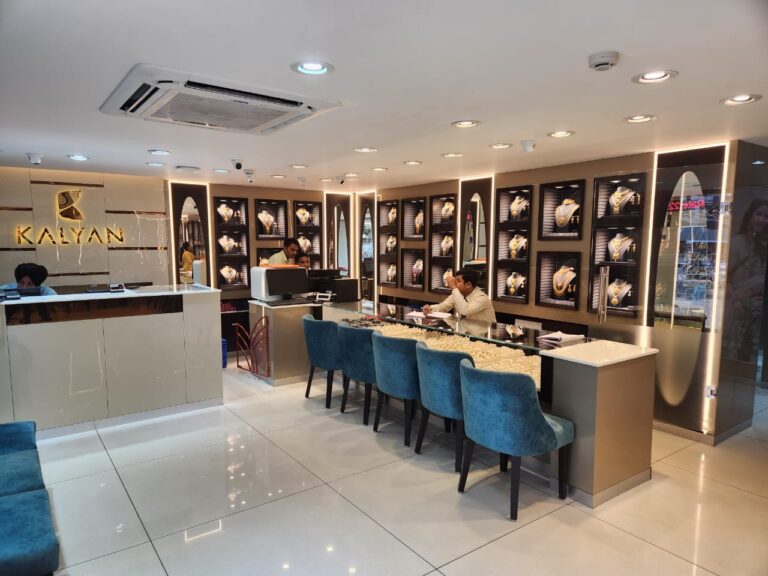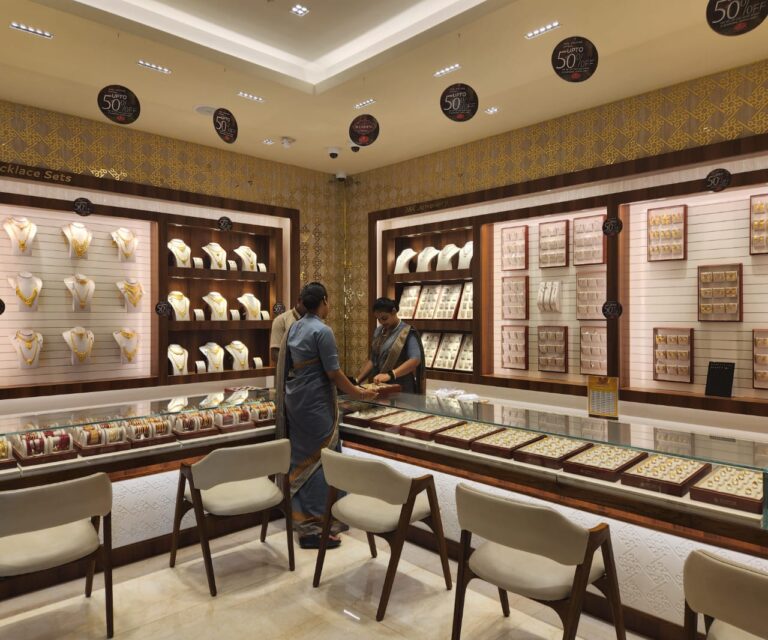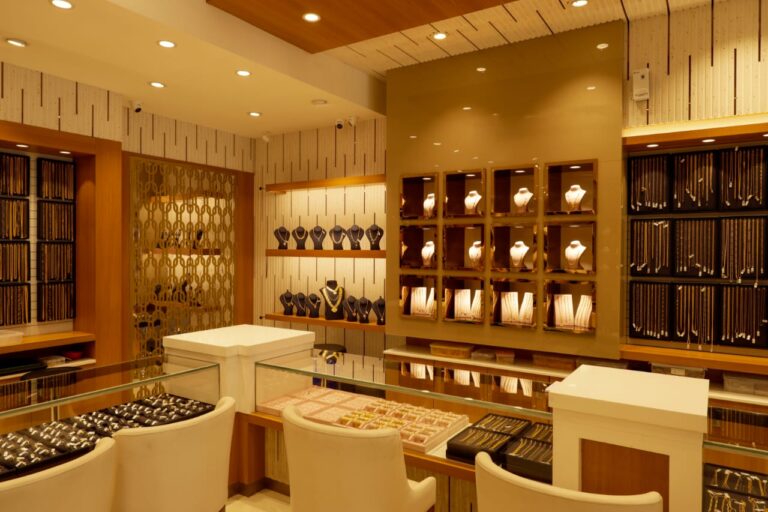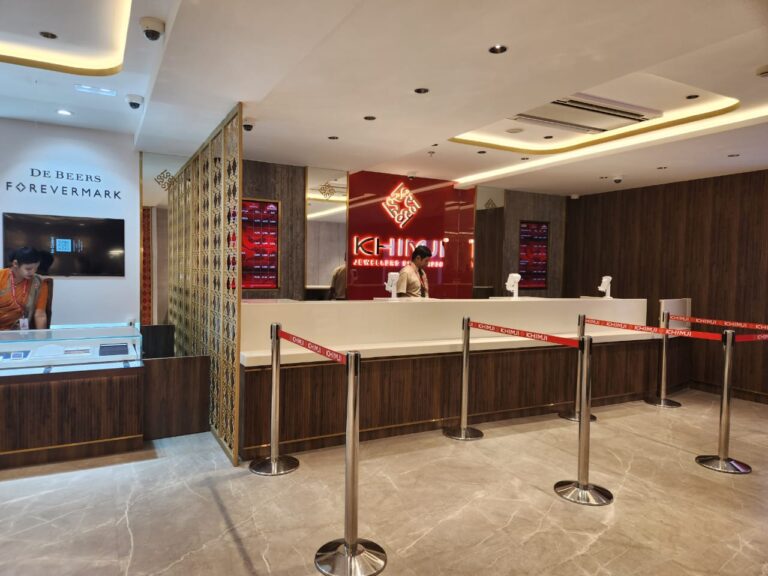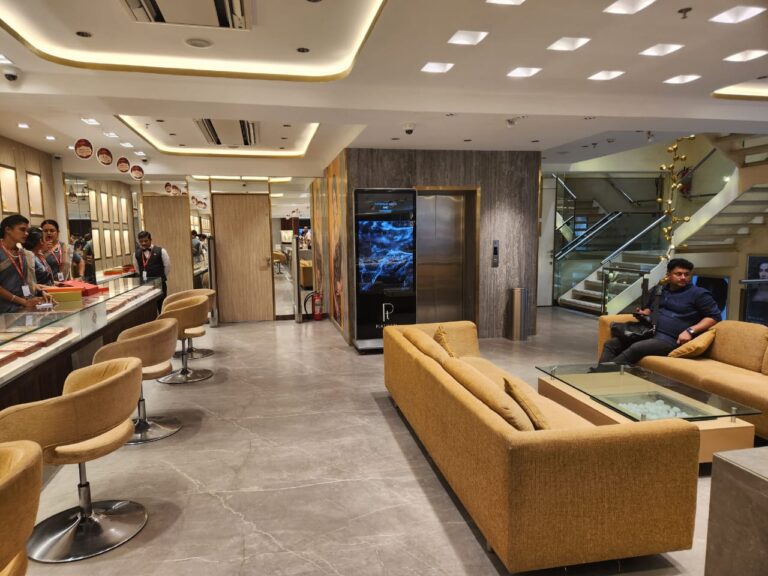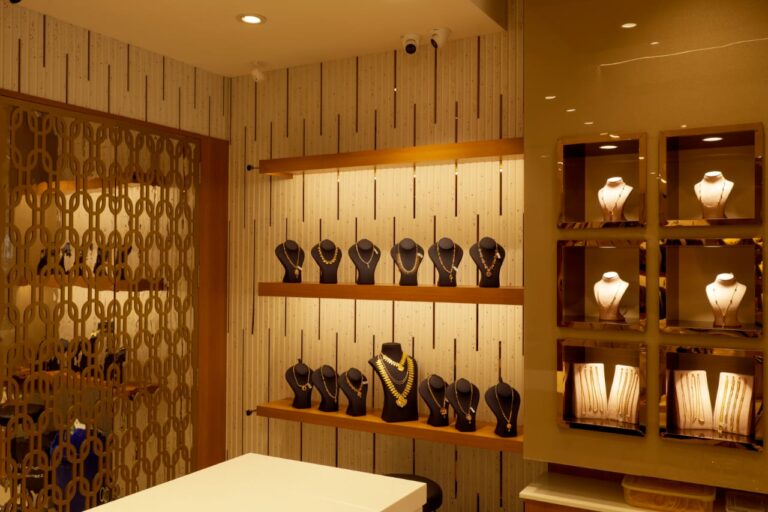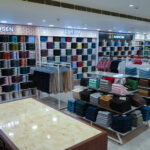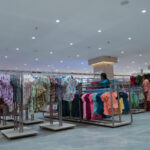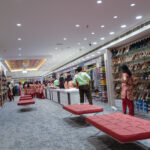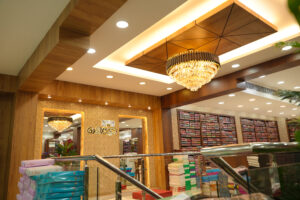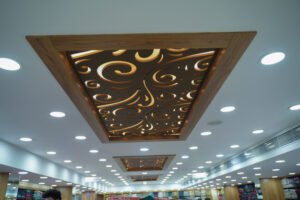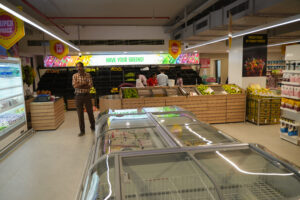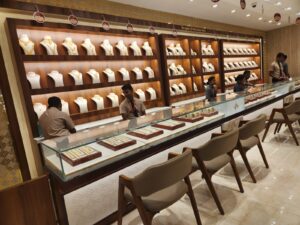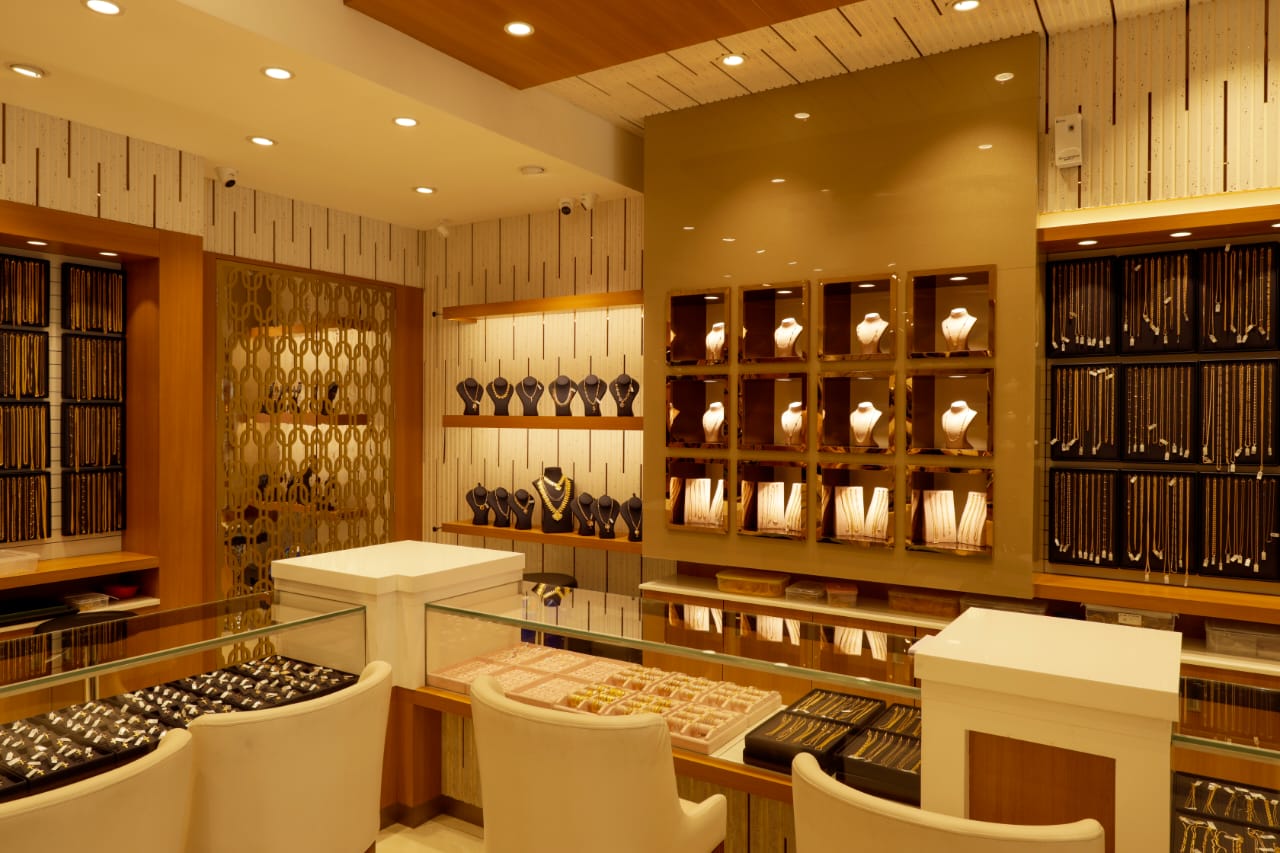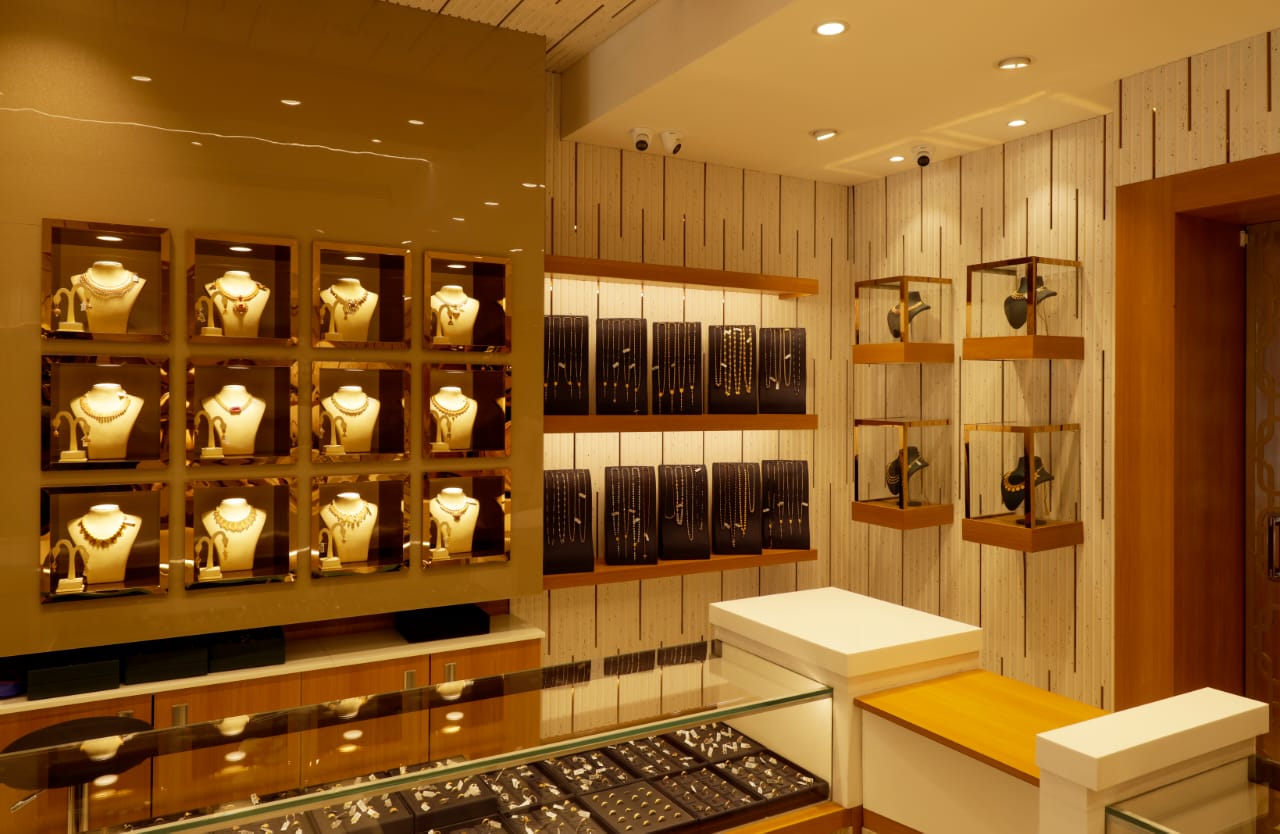Our Services
Theme and Concept: Begin by defining the theme and concept of the store. Whether it’s modern and minimalist, classic and elegant, or bold and avant-garde, the theme sets the tone for the entire interior design.Best jewellery showroom interior designers in kerala
Efficient use of space is essential in a jewelry store. Consider factors like traffic flow, display areas, and customer engagement zones. Create intimate areas for consultation and spacious showcases for displaying the jewelry collections.
Lighting plays a crucial role in showcasing jewelry. Incorporate a mix of ambient, accent, and task lighting to highlight the brilliance and sparkle of the pieces. LED spotlights, track lighting, and pendant lights are commonly used to illuminate display cases and focal points.
Choose materials and finishes that evoke luxury and sophistication. Common choices include polished metals, glossy surfaces, rich woods, and luxurious fabrics like velvet or suede. Reflective surfaces can enhance the sparkle of the jewelry.
Display cases should be carefully designed to showcase the jewelry effectively while providing security. Consider factors like glass clarity, adjustable shelving, and locking mechanisms. Incorporate mirrored backdrops to create depth and amplify the visual impact.
Incorporate branding elements seamlessly into the interior design. This could include logos, colors, and signage that reflect the store’s identity and reinforce its brand image.
Focus on creating a memorable and enjoyable shopping experience for customers. Incorporate comfortable seating areas, interactive displays, and personalized service to engage shoppers and encourage longer dwell times.
Implement security measures discreetly to protect valuable merchandise without detracting from the overall aesthetic. This could include surveillance cameras, alarm systems, and secure locking mechanisms on display cases.
Consider integrating sustainable design principles into the interior, such as using eco-friendly materials, energy-efficient lighting, and recycling or repurposing existing fixtures.
Plan for flexibility in the interior design to accommodate seasonal promotions and new product launches. Incorporate modular display elements that can be easily reconfigured to keep the space fresh and enticing.
Textile Interior Designers
Choosing the right fabrics is essential for achieving the desired look and feel of a space. Factors such as texture, color, pattern, and durability need to be considered based on the room’s purpose and design scheme.
Textiles are commonly used for upholstering furniture such as sofas, chairs, and ottomans. The choice of upholstery fabric can significantly impact the overall style and comfort of the furniture piece.
Curtains, drapes, and blinds not only serve functional purposes like controlling light and privacy but also contribute to the aesthetic appeal of a room. Different fabrics and styles can create various moods, from formal to casual.
Rugs and carpets add warmth, texture, and color to a room while also providing comfort underfoot. Depending on the room’s function and traffic flow, different types of rugs and carpets may be suitable.
Textiles such as bedding, throw pillows, and blankets can be used to add layers of comfort and style to bedrooms and living spaces. Mixing and matching different fabrics and patterns can create visual interest and personality.
Fabrics can also be used as wall coverings to add warmth, texture, and dimension to a room. This includes options like fabric wall panels, tapestries, and upholstered walls.
Textiles play a vital role in accessorizing and adding finishing touches to a space. This includes items such as tablecloths, napkins, cushions, and throws, which can be easily switched out to update the room’s look.
In addition to aesthetics, it’s important to consider the practical aspects of textile choices, such as maintenance requirements, durability, and suitability for the intended use and environment.

